Electric bikes have revolutionized cycling, offering a fun and efficient mode of transportation for commuters, adventurers, and casual riders alike. However, as the chilly winds begin to blow and snowflakes start to blanket the city streets, many e-bike enthusiasts wonder, "Can you ride an e-bike in the snow?"
Riding an electric bike in snowy conditions presents unique challenges and requires specific precautions to ensure both your safety and the longevity of your bike. In this guide, we will explore the safety aspects of riding e-bikes in the snow, share essential tips for navigating winter roads, and advise on how to store your e-bike during the colder months.

Is It Safe to Ride in the Snow?
Riding an e-bike in the snow is not inherently unsafe, but it poses several safety concerns that should be carefully considered before you head out. The primary risk involves reduced traction, which can lead to slips and falls. Snow and ice can significantly compromise the grip of your e-bike's tires, making it harder to control your speed and navigate turns.
Visibility is another concern, as snowfall can obscure your vision and make you less visible to other road users. Cold temperatures can also affect battery performance, reducing your e-bike's range.
However, with the right equipment, precautions, and riding techniques, riding your e-bike in the snow can be safe. It's crucial to assess the conditions before every ride. Light, fluffy snow may provide a manageable layer for riding, but icy conditions or heavy, compacted snow might require reconsidering your plans.

How to Ride Safely in Winter?
Winter riding demands extra caution and preparation to ensure your safety on an e-bike. Here are some key tips to help you navigate snowy and icy conditions safely:
- Equip Your Bike Properly: For regular e-bikes, invest in winter-specific tires that are designed for snow and ice. These tires will offer better traction and stability. Also, consider using fenders to prevent snow from splashing onto your clothing and reducing your comfort and visibility.
- Adjust Your Braking Technique: Braking on a snowy surface requires gentle, gradual stops to avoid skidding. Use both brakes evenly and start braking earlier than you would under normal conditions.
- Lower Your Seat: Reducing your seat height can lower your center of gravity and offer more stability. It also makes it easier to put your feet down quickly if you start to slide.
- Reduce Your Speed: Slower speeds will give you more time to react to slippery surfaces, unexpected obstacles, or other traffic. It also reduces the risk of serious injuries in case of a fall.
- Use Lights and Reflective Gear: Visibility can be severely compromised during winter due to shorter days and potential fog or snowfall. Always equip your e-bike with front and rear lights and wear reflective clothing or accessories.
- Control Tire Pressure: Lower tire pressures can increase the contact area between the tire and the snow, improving grip. However, too low pressure might lead to punctures; find a balance that suits the terrain.
- Plan Your Route: Choose routes that are less likely to be icy or snow-packed. Main roads are often cleared more frequently than side streets. Additionally, try to avoid steep inclines and areas where ice tends to form.
- Check Your Bike Before Each Ride: Winter conditions can be harsh on your bike's mechanical parts. Regularly check your brakes, tires, lights, and battery charge before heading out to ensure everything is in working order.

Tips for Storing Your E-Bike Properly for Winter Conditions
Proper storage of your e-bike during winter is crucial not only for preserving its condition but also for ensuring it's ready to perform when you need it. Here are key tips to effectively store your e-bike during the colder months:
- Location: Choose a cool, dry, and well-ventilated area, ideally indoors. A garage, basement, or shed are good options. Avoid damp spaces where condensation can lead to rust and corrosion.
- Clean Before Storage: Salt, dirt, and road grime from winter roads can corrode metal parts and damage your e-bike's finish. Clean your bike thoroughly, paying special attention to the drivetrain and any other areas where debris tends to accumulate.
- Lubricate: Before storing, apply lubricant to the chain, derailleurs, and other moving parts to prevent rust and ensure smooth operation.
- Battery Care: If your e-bike has a removable battery, store it indoors in a cool, dry place at around 30-60% charge. Avoid storing it fully charged or completely discharged.
- Tire Pressure: Maintain proper tire pressure even during storage to prevent flat spots and ensure the tires are in good condition when you are ready to ride again.
- Suspension: If your e-bike has suspension, adjust it to its softest setting to reduce stress on the components.
- Cover: If storing your e-bike outdoors, use a waterproof cover to protect it from the elements.
- Regular Inspections: Even during storage, check your e-bike periodically for any signs of damage, corrosion, or leaks.
Conclusion
So, can you ride an e-bike in the snow? As we've discussed, riding an e-bike in the snow can be a thrilling and enjoyable experience if done correctly. By understanding the safety protocols, preparing appropriately for winter conditions, and employing proper storage techniques, you can confidently explore winter landscapes and continue your cycling adventures throughout the year. Remember, safety always comes first. Be prepared, stay alert, and enjoy the unique experience of riding your e-bike in the snow!
FAQ
What should I consider before riding my e-bike in the snow?
Before riding your e-bike in the snow, ensure your tires have deep treads and are properly inflated for better traction. Cold temperatures can affect battery performance, so keep it fully charged and insulated. Be aware that braking distances increase on snow and ice; ride slower and allow more time to stop. Enhance your visibility with lights and reflective clothing and wear suitable cold-weather attire to stay warm and dry.
Should I make any modifications to my e-bike for riding in the snow?
Yes, consider modifications like using tires with tread patterns designed for snow, adding fenders to prevent slush buildup, and ensuring adequate lighting for increased visibility in snowy conditions.
How do I maintain my e-bike after riding in the snow?
After riding your e-bike in the snow, maintain it by cleaning off any accumulated snow and salt residue, drying components thoroughly, lubricating the chain, and inspecting for any signs of corrosion or damage.


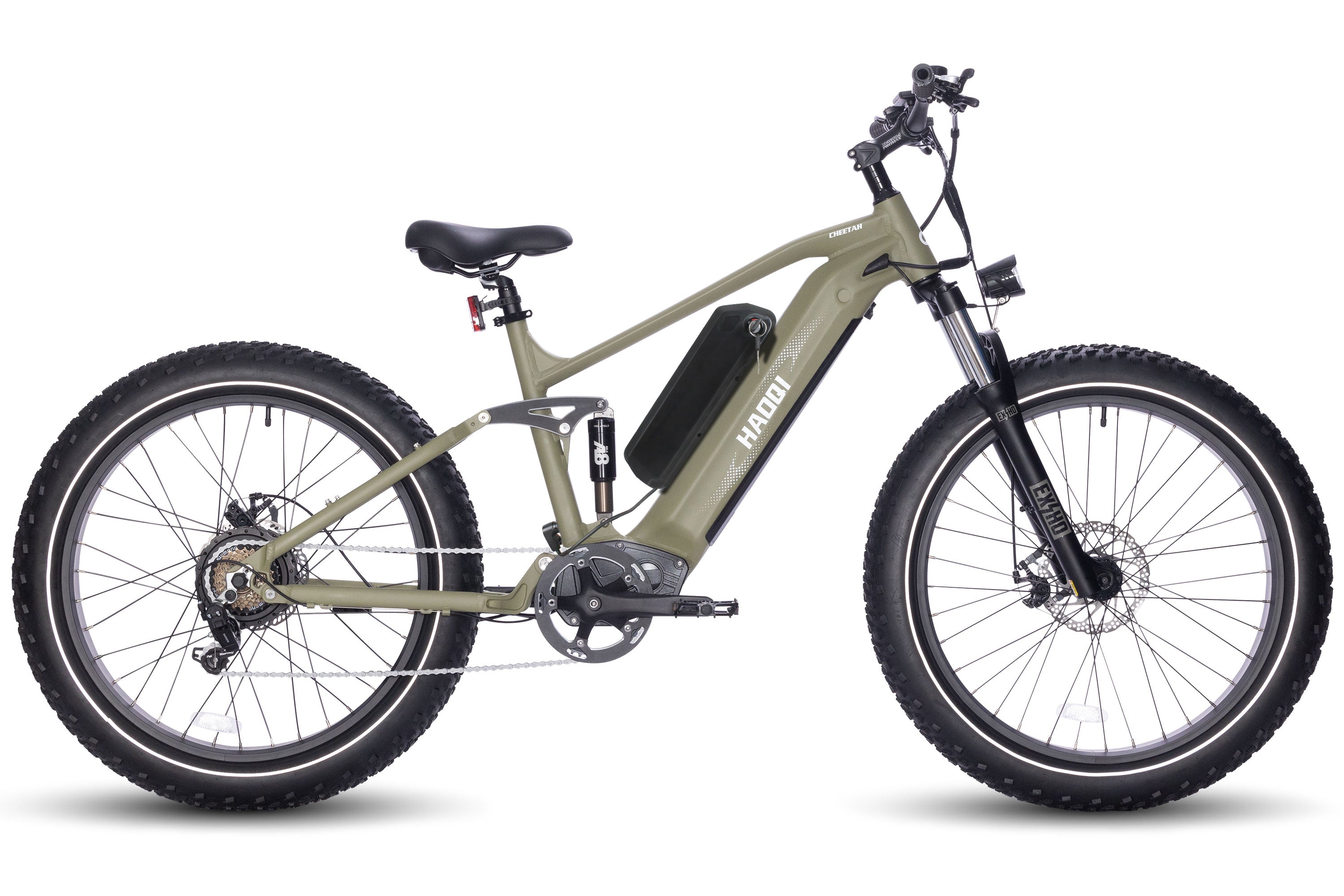
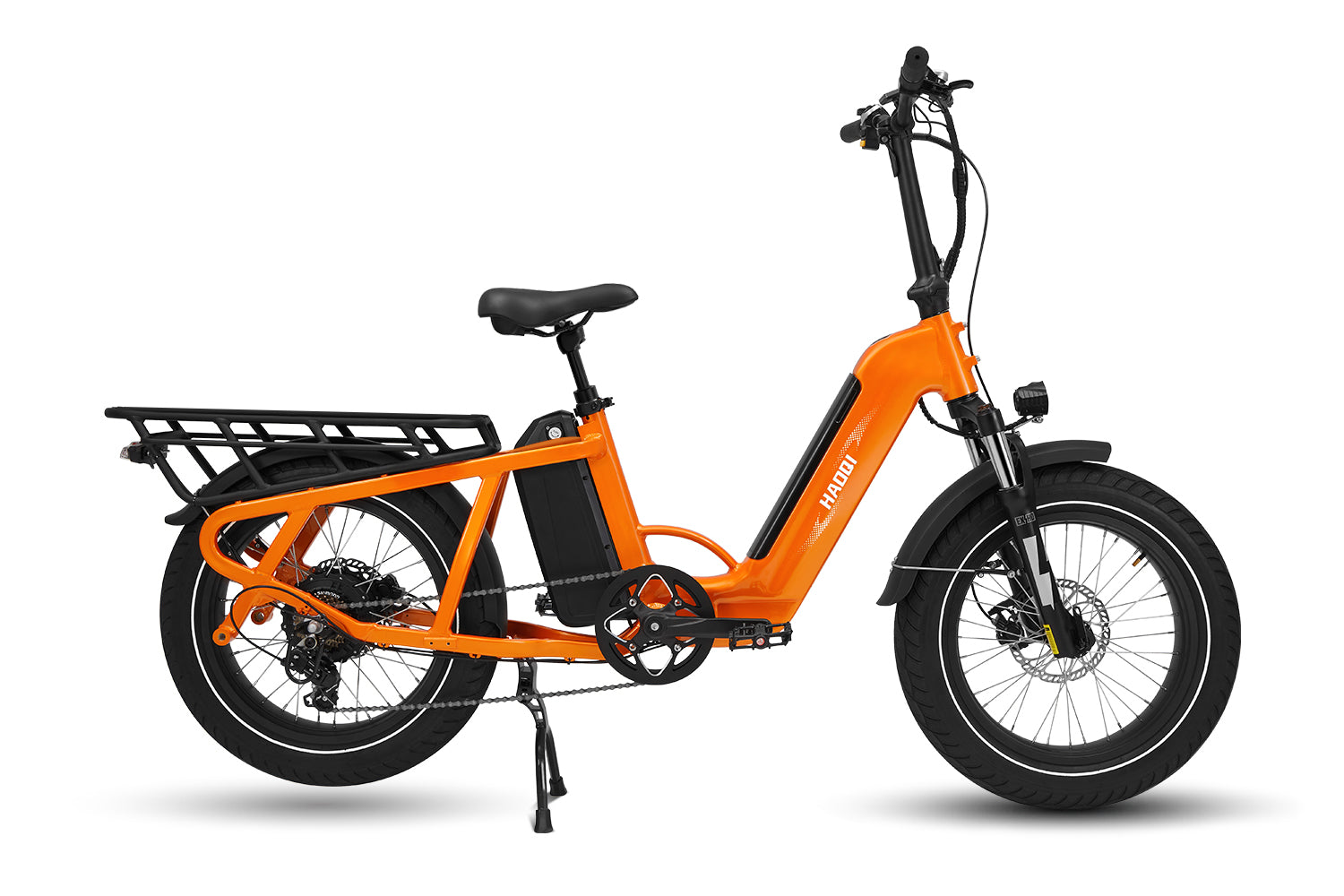
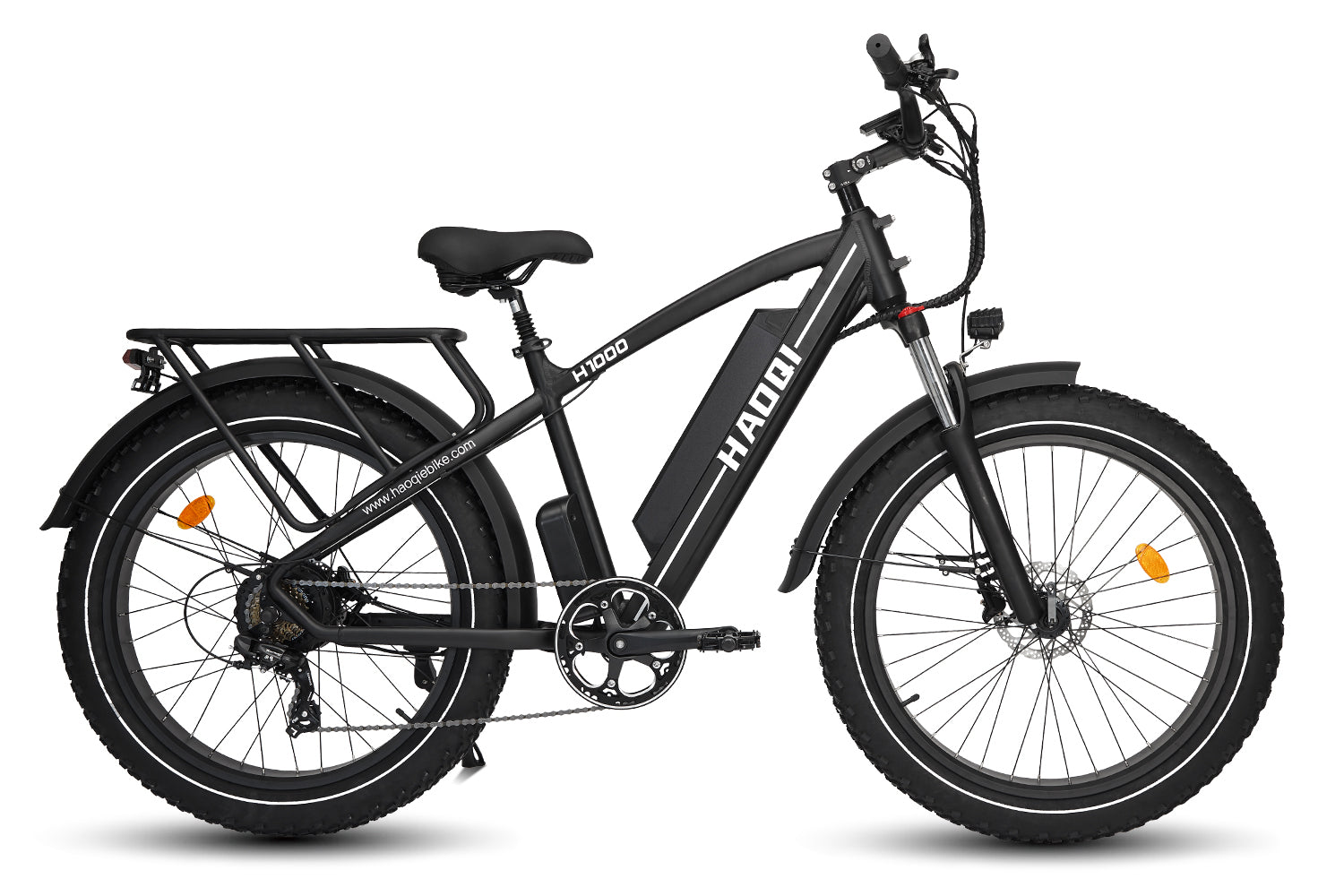
![HAOQI Antelope 500W Cargo Electric Bike (UL Certified) [electric bike] [HAOQI ebike]](http://haoqiebike.com/cdn/shop/products/haoqi-antelope-cargo-electric-bike-with-dual-battery-haoqiebike-com-1.jpg?v=1753954498&width=1500)
![HAOQI Squirrel Folding Electric Bike (UL Certified) [electric bike] [HAOQI ebike]](http://haoqiebike.com/cdn/shop/files/1_03c67b67-715e-4617-a648-51f108ceb425.jpg?v=1766473332&width=1500)
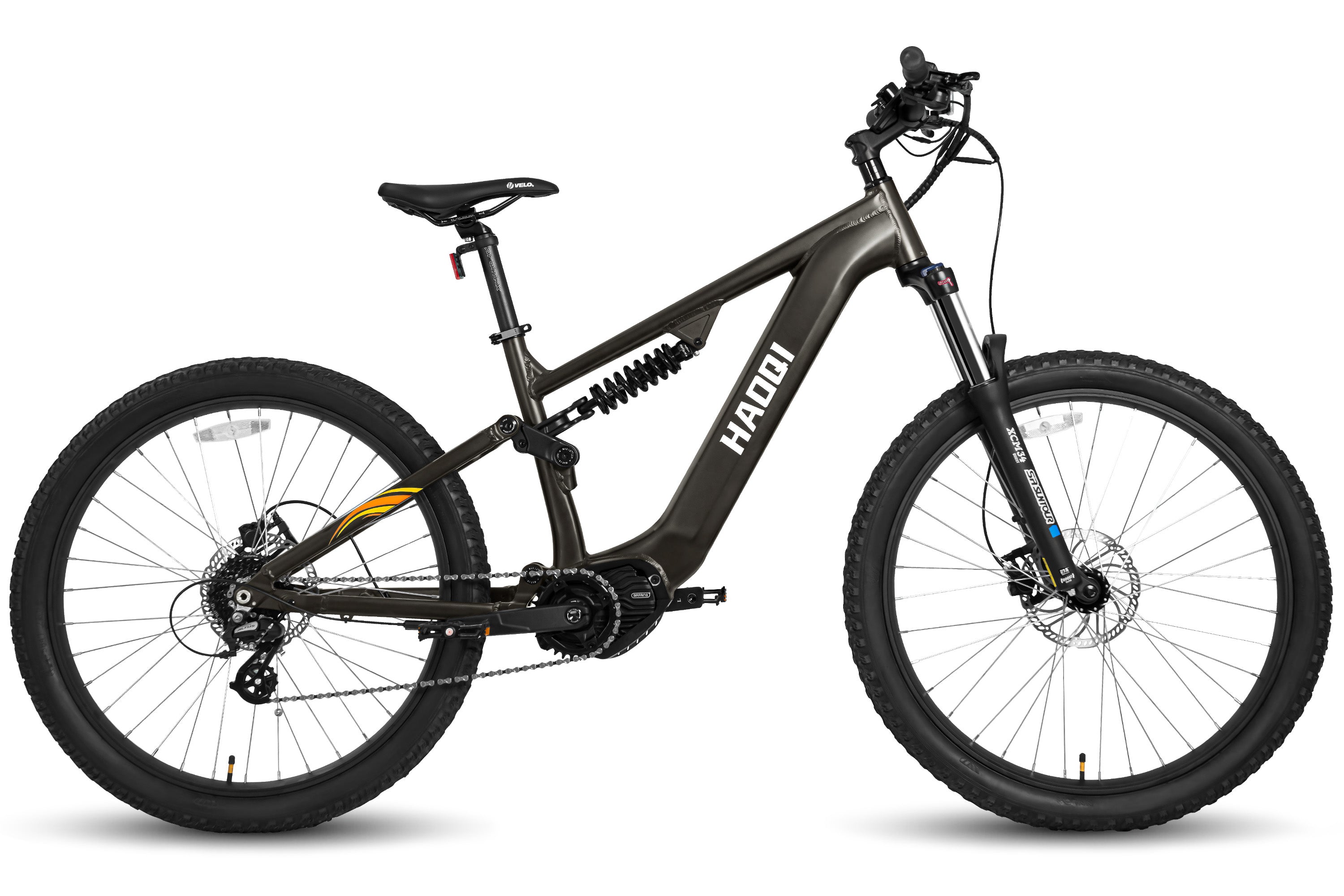
![HAOQI Eagle Long Range Electric Bicycle (UL Certified) [electric bike] [HAOQI ebike]](http://haoqiebike.com/cdn/shop/files/2_bf7ae46b-aad6-472a-9c14-d56ca3f0feb6.jpg?v=1755142722&width=1500)
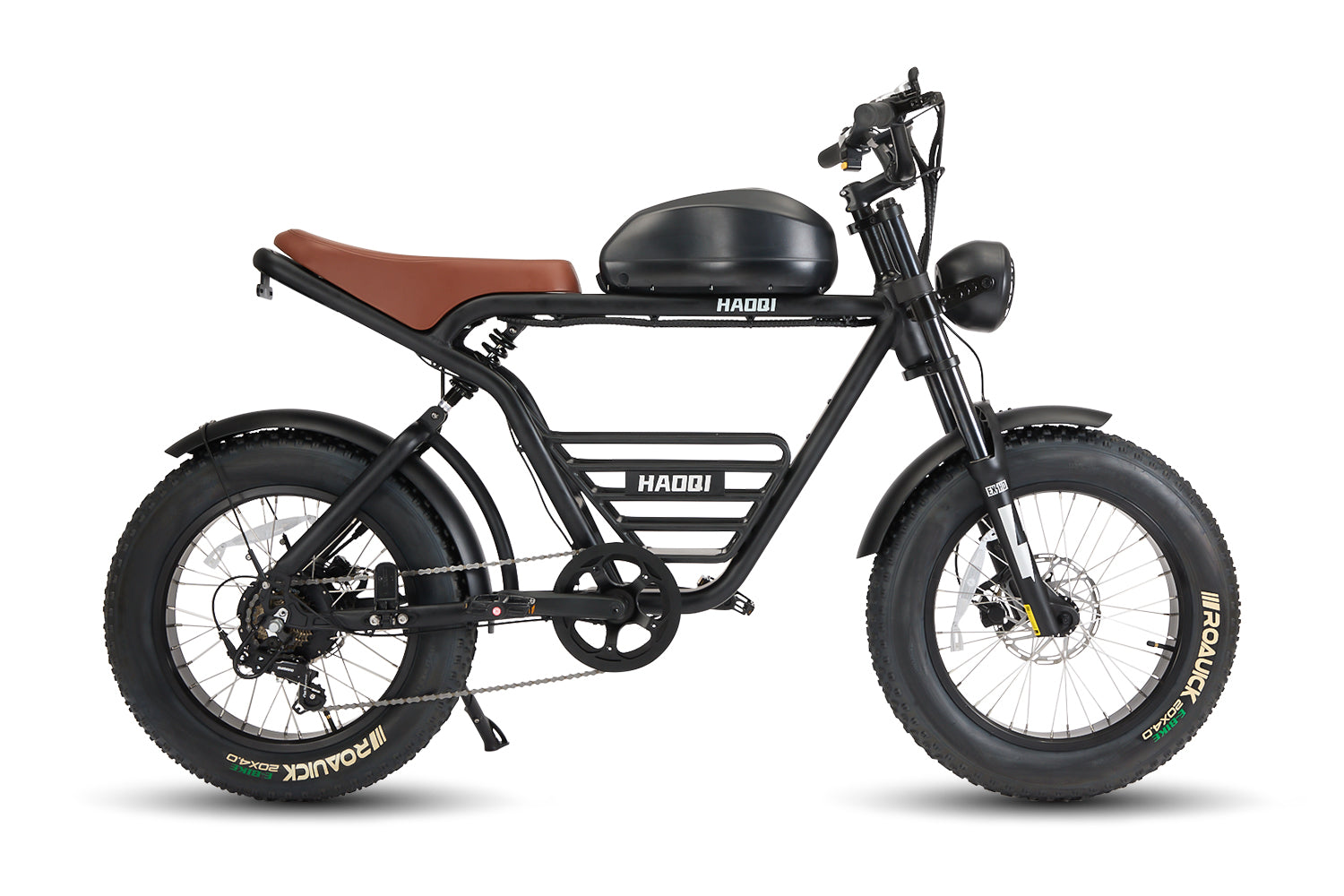
![HAOQI Antelope Pro 750W Cargo Electric Bike (UL Certified) [electric bike] [HAOQI ebike]](http://haoqiebike.com/cdn/shop/products/haoqi-antelope-pro-cargo-electric-bike-with-dual-battery-750w-haoqiebike-com-1.jpg?v=1751610204&width=1500)
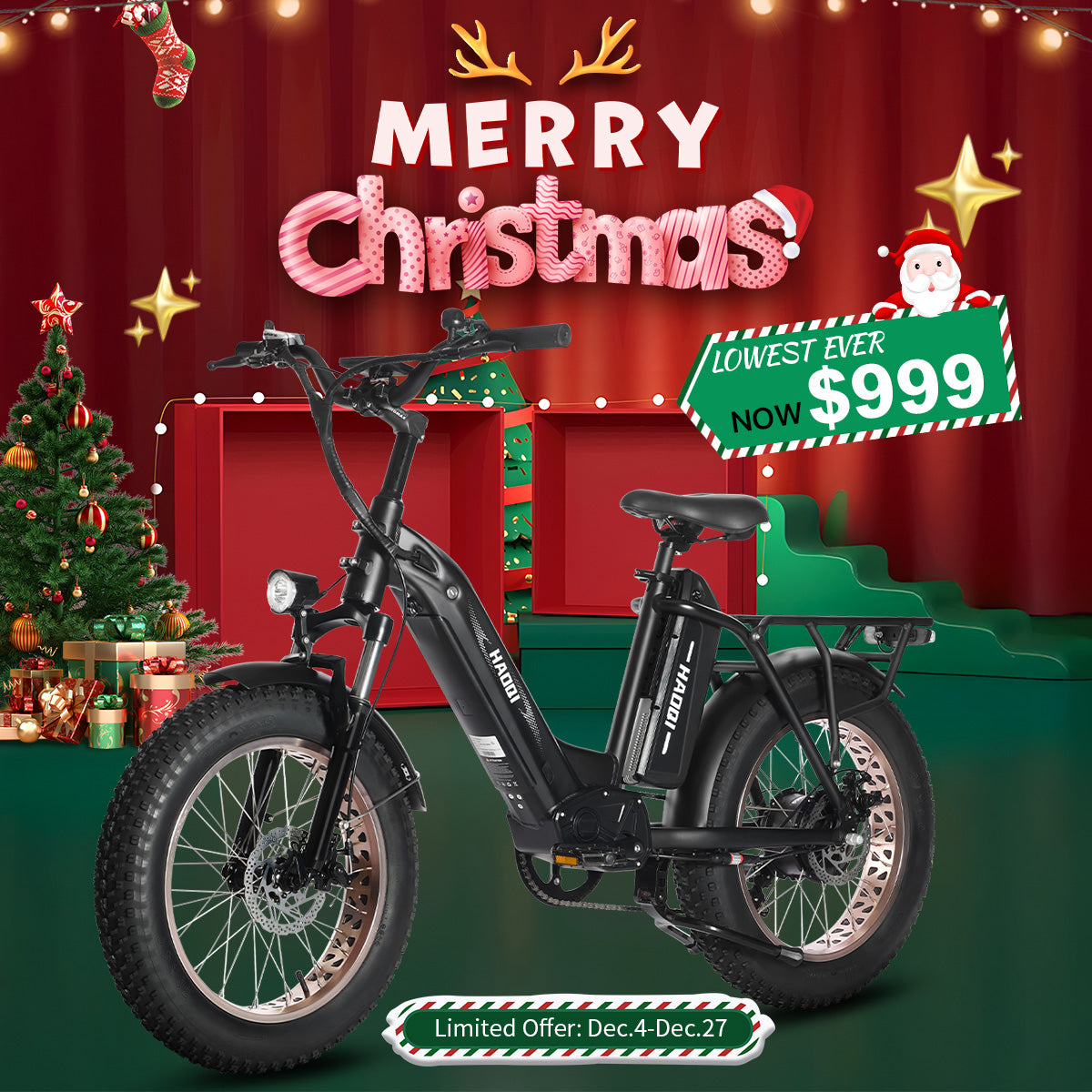

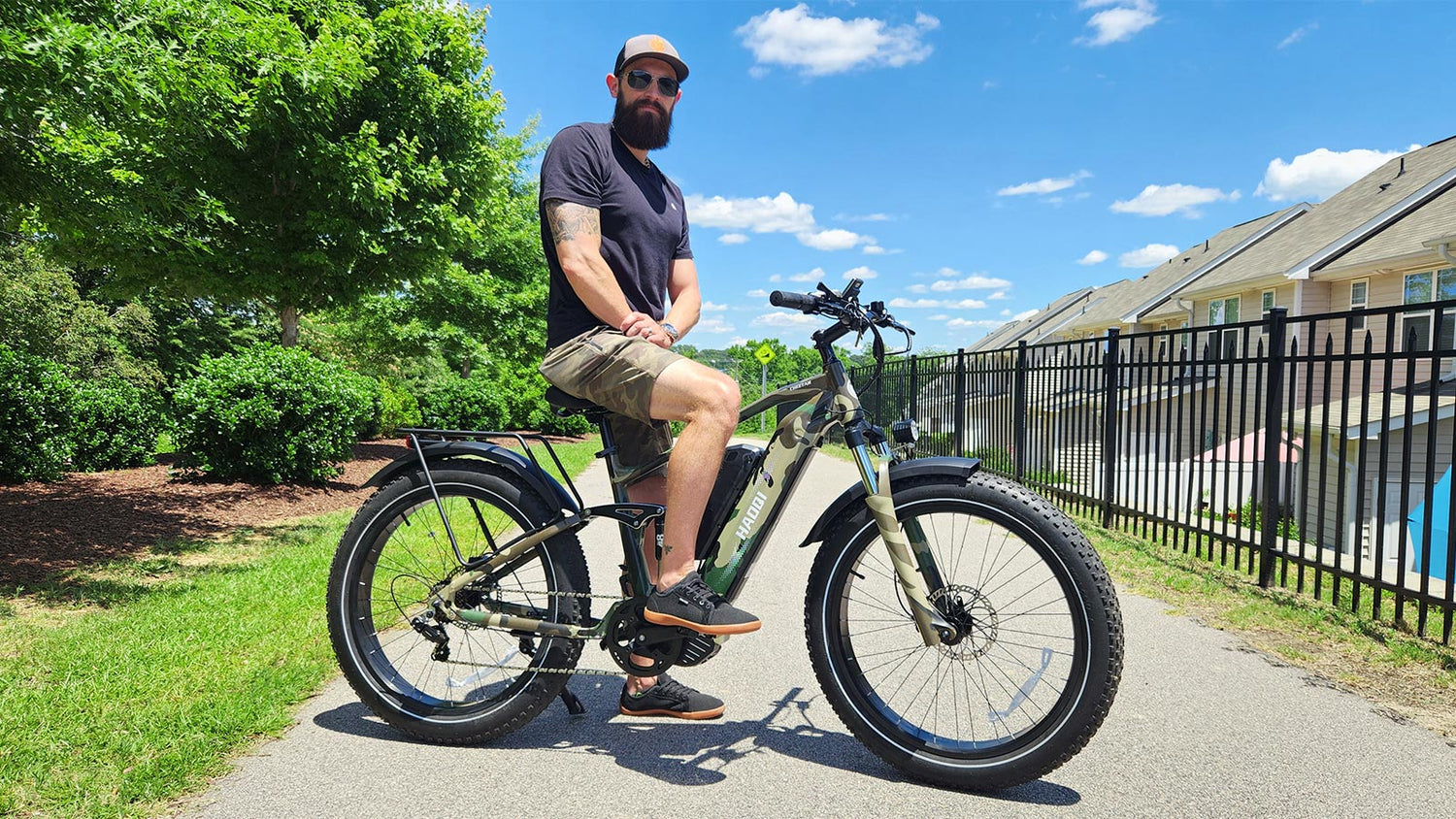






Leave a comment
All comments are moderated before being published.
This site is protected by hCaptcha and the hCaptcha Privacy Policy and Terms of Service apply.